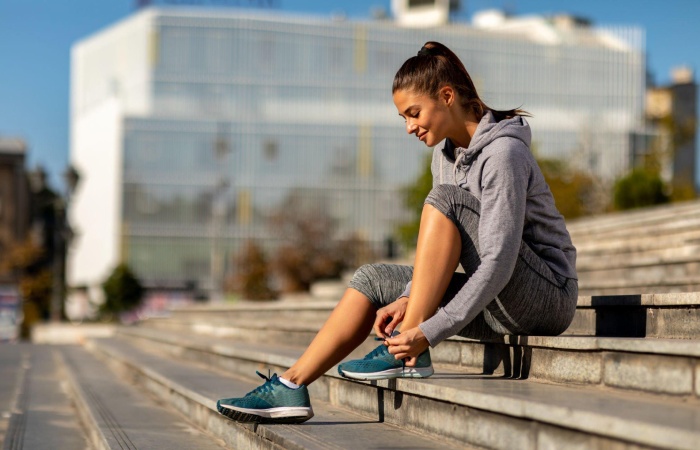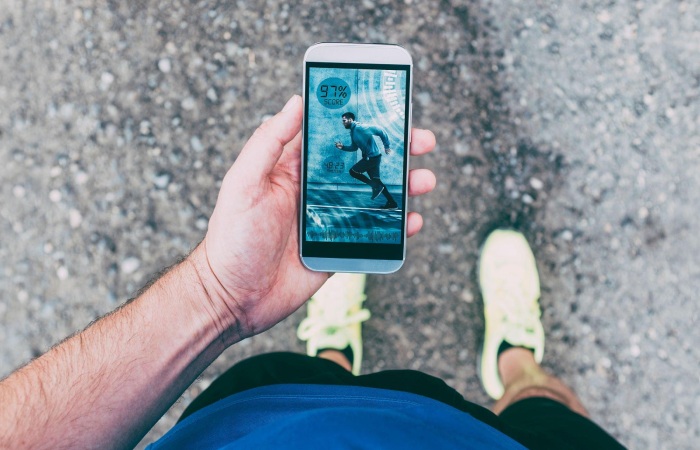Table of Contents
Jogging – Explaining
Jogging is a form of running at a leisurely pace, prevalent from the 1960s in the United States. The practice of jogging was created in New Zealand when an Olympic track coach. The publication of the book gave the approval of this activity substantial impetus.
Jogging (1967) by Bill Bowerman, a University of Oregon track coach, and W.E. Harris, a heart specialist. One Dr Lydiard suggested it as a conditioning activity for retired Olympic runners; Bowerman observed the action there and was impressed.
Many medical authorities have endorsed jogging for its value as a heart exercise and for general physical conditioning, usually practised on alternate days. However, other medical officers warn that fallen arches, shin splints, sweat miliaria, strained Achilles tendons, bruised heels, and knee and back ailments can result from jogging—usually done on hard surfaces with the feet striking the ground from 600 to 750 times per mile.
Warmup exercises before jogging, properly designed shoes, loose clothing, proper jogging technique, and general good health—as well as sensible objectives—are necessary for the safe pursuit of the activity. The U.S. National Jogging Association was formed in 1968 to promote the pastime.

Benefits of Jogging
The benefits of regular exercise are famous and well recognized, and running for 30-40 minutes 3 times a week can be a fantastic way to build stamina and muscle while losing fat. Regular jogging can also decrease your risk of health problems, such as type 2 diabetes, heart disease, and stroke. If you’re new to running, receiving started can seem a little overwhelming. However, if you plan ahead and gradually ease into your new routine, you’ll start seeing the benefits of jogging in no time!
The American Heart Association Trusted Source calls walking the most popular exercise in the nation. Individuals walk their dogs, take a stroll on the seashore, climb the stairs at work — we love to walk.
Jogging is a great way to grow the strength of your workout gradually so you can minimize the risk of an injury that could sideline you for weeks. But what if mobile isn’t getting your heart rate up high enough for long enough? What if you’ve plateaued?
Dressing for Your Jogging

Choose a comfortable pair of running shoes. Here are a wide variety of running shoes on the market, so you might feel daunted by the task of choosing the right team. However, a recent study displays that the best successively shoes for you are probably the ones that feel the most comfortable. Energy to the store and try on 4 or 5 pairs of successive shoes. Income time to move around in them, and pick the ones that sensation the greatest to you.
If possible, take a quick jog about the store to get a sense of how the shoes feel when you run.
Wear the socks you’d typically wear while running since this will give you a good idea of the fit.
Replace your next shoes every 350–500 miles (560–800 km). As successively shoes start to wear out, they don’t engross surprise as well. Once you start jogging, keep the path of how much distance you’ve protected, and get new running shoes after about 350–500 miles (560–800 km) to prevent pain and injury.
If the heels of your shoes, you can still use them for mobile.
Smooth if your jogging shoes haven’t seen that much use. Shoes older than one year might become less comfortable due to changes in the soles that occur over time.
Choose an Indoor Track or Routine to Avoid the Elements for Jogging
If the weather is severe or external air situations are unsafe, running indoors can be a great alternative to an outdoor jog. Head to your local gym or fitness centre and hit the track or treadmills if you don’t want to jog outside.
Running outdoors can provide an improved workout since working in contradiction of wind resistance. However, you can reward that by locating your treadmill on a 1% incline.
To decrease your risk of repetitive motion injury while running indoors, vary your speed from time to time
Use a Jogging App to Strategy your Route and Track your Run.

If you’re involved in keeping the path of how far and how fast you jog, as well as how many calories you’re burning, successively apps can be very supportive. Connect one of these apps on a smartphone before the suitability tracker and learn the features before you start bumping. Many of these apps also let you set away fast time, which can be particularly useful if you’re running in a new or unfamiliar area.
Popular running apps include Run keeper, Map My Run, Run tactics, and Puma track.
It can Help you Drop Weight
Walking, power-walking, jogging, and running improve cardiovascular health and help prevent obesity. But one study, Trusted Source, found that you’ll have more success if you want to boost your weight loss if you choose up to your step.
The study doesn’t distinguish between jogging and successively. Instead, it focused on increased weight loss when members ran instead of walked.
It can Strengthen your Immune System
For the improved part of a century, exercise experts thought vigorous exercise could potentially leave you incapacitated and at risk for infection and disease. A closer look at the research Trusted Source indicates the conflicting is factual.
Moderate exercise, like jogging, actually supports your body’s response to illness. That holds for short-term diseases like upper breathing tract pollution and long-term illnesses like diabetes.
It Has a Positive Effect on Insulin Fight
Affording to the Centres for Disease Control and Prevention (CDC)Trusted Source. More than 84 million Americans have prediabetes.
Insulin resistance is one of the symbols of prediabetes. The cells in your body simply aren’t replying to insulin, the hormone that keeps blood sugar levels in check.
The good news: A Important evaluation Source of the research found that regular running or jogging decreased insulin resistance in study participants. Investigators noted that a decrease in body fat and inflammation might be behind the development of insulin resistance.
Conclusion
Jogging is a form of aerobic workout in which you continue a running speed under six mph. Regularly jogging can help you Lose Weight significantly if you also change your diet.
Jogging can also help you improve your emotional health and resistance system, decrease insulin resistance, cope with stress and depression, and maintain suppleness as you age.
Running is one of the most popular sport and leisure activities globally. Whether you enjoy a brisk jog on the treadmill or are training outdoors for an upcoming marathon, there is always a running style that can suit you and a location to do. Below are four exercises into your warmup to improve mobility in your hips and ankles and maintain an upright posture.

